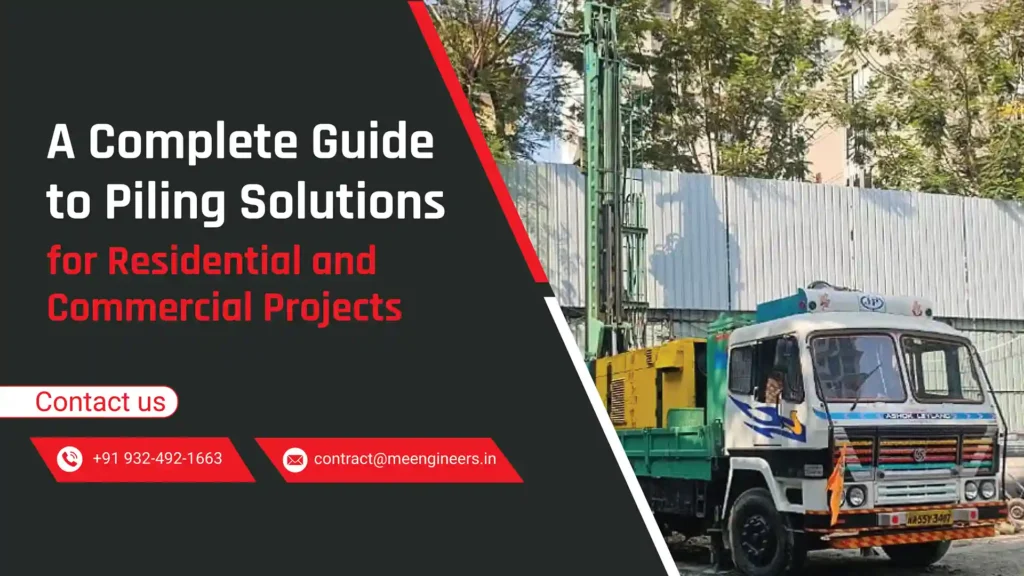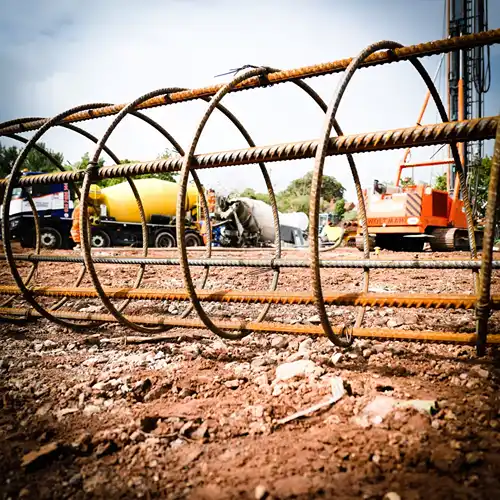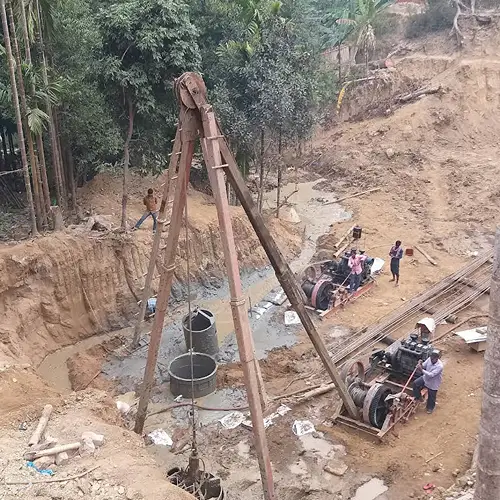
A Complete Guide to Piling Solutions for Residential & Commercial Projects
Why Foundations Matter
Imagine trying to build a tall tower of blocks on a soft pillow—it would wobble and eventually fall. The same idea applies to buildings. Every structure, whether it’s your cozy home or a skyscraper, needs a strong foundation to stay stable. In construction, piling is a popular method used to make sure buildings can safely stand for decades.
Piles are long, strong columns made of concrete, steel, or timber that go deep into the ground to reach solid soil or rock. They act like the “legs” of your building, carrying the weight safely down to the firm layers below. Whether it’s residential piling solutions for homes or commercial piling solutions for offices and factories, using the right pile ensures safety, stability, and durability.
At ME Engineers, we specialize in providing top-quality piling solutions tailored for every type of project, combining modern techniques with years of expertise.
Residential Piling Solutions

Why Do Homes Need Piles?
Not all soil can support a house. Loose, sandy, or clay-heavy soil can cause walls to crack or foundations to sink. In such cases, residential piling becomes essential. By reaching deeper, stronger soil layers, piles create a secure base that prevents settlement, tilting, and long-term damage.
Common Types of Residential Piles
-
Timber Piles: Long-lasting wooden poles treated to resist decay. Ideal for areas with water or coastal conditions.
-
Concrete Piles: Extremely strong and durable, used in many home construction projects.
-
Steel Piles: Provide excellent load-bearing capacity for heavier homes.
Benefits of Residential Piling
-
Prevents sinking or uneven settlement.
-
Protects the structure during floods or natural shifts in soil.
-
Increases the lifespan and stability of the home.
Commercial Piling Solutions
Why Commercial Buildings Need Piles
Commercial projects, like shopping malls, offices, and factories, are much heavier than homes. Their weight demands stronger foundations. Additionally, commercial buildings are often built on urban land where soil may be weak or inconsistent. That’s where commercial piling solutions come in.
Common Types of Commercial Piles
-
Bored Piles: Holes are drilled and filled with reinforced concrete, suitable for high-rise buildings.
-
Driven Piles: Piles hammered directly into the ground, offering quick and immediate support.
-
Helical Piles: Screw-like piles twisted into the ground, perfect for projects with limited access or soft soil.
Benefits of Commercial Piling
-
Supports extremely heavy structures efficiently.
-
Reduces risks of tilting or sinking over time.
-
Allows construction on challenging or urban terrains with minimal disruption.
Piling Installation Methods
Choosing the right installation method is crucial. Some popular methods include:
- Driven Piles: Hammered into the soil using heavy machinery. Quick and effective for many commercial projects.
- Bored Piles: Drilled and then filled with reinforced concrete. Excellent for high-rise buildings.
- Screw or Helical Piles: Twisted like a giant screw into the ground. Minimal vibration, ideal for residential and urban projects.
- Jetting: Water assists pile installation in soft or sandy soil.
Each method depends on soil type, project scale, and environmental considerations.

Interesting Statistics About Piling
- Helical piles can support loads between 5 to 500 tons (Source: Ideal Foundation Systems).
- About 30% of residential projects in India now use deep piling techniques to ensure stability.
- Concrete piles are favored in commercial construction due to their strength, with over 60% of high-rise buildings in Mumbai using concrete pile foundations (Source: Indian Construction Review).
Frequently Asked Questions (FAQs)

1. Why are piles important in construction?
Piles transfer a building’s weight to stronger underground layers, preventing settling or tilting.
2. How deep do piles go?
Depth can range from 10 to 100 meters, depending on soil strength and building size.
3. Are piles expensive?
Initial costs may be higher, but piles prevent future repairs, saving money over time.
4. Which pile type is best for residential projects?
Concrete and steel piles are popular, while timber piles are ideal for coastal or flood-prone areas.
5. How long do piles last?
With proper maintenance, piles can last for 50+ years, ensuring a stable foundation for generations.
About ME Engineers
At ME Engineers, we provide expert piling solutions for both residential and commercial projects. From assessing soil conditions to choosing the right pile type and installation method, we ensure each project is safe, strong, and long-lasting. Our services are trusted by homeowners, builders, and developers across India.
Explore our full range of services and learn more about our piling solutions on the ME Engineers service page.
Conclusion
A strong foundation is the first step toward a safe and durable building. Whether it’s a family home or a high-rise commercial project, piling solutions provide the stability and reliability every structure needs. By choosing ME Engineers, you invest in quality, safety, and long-term peace of mind.